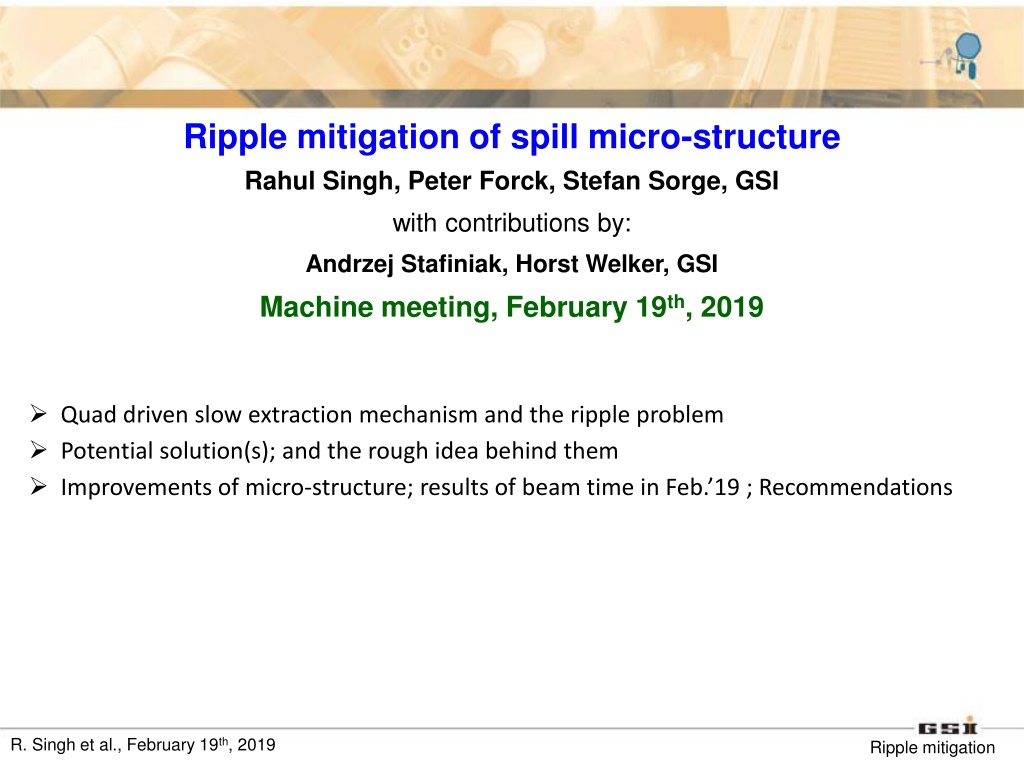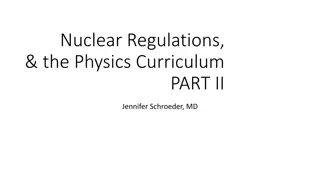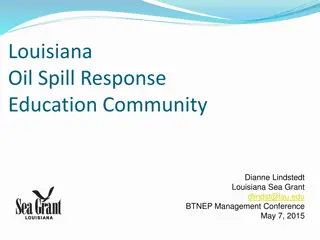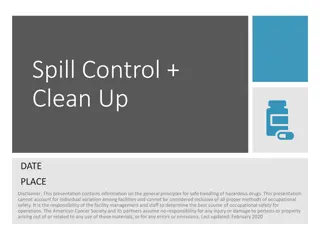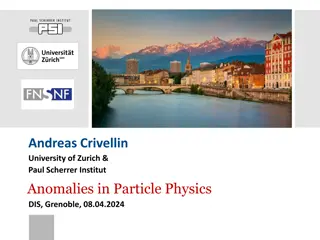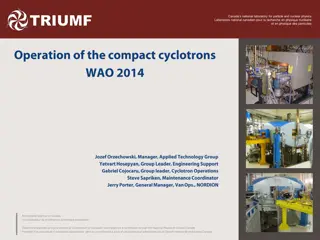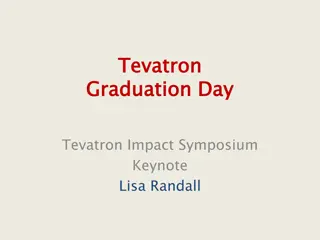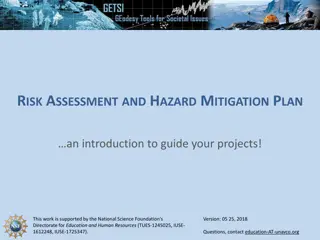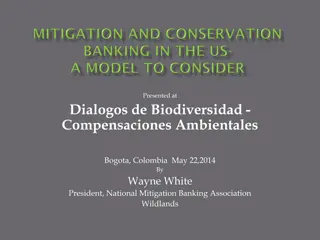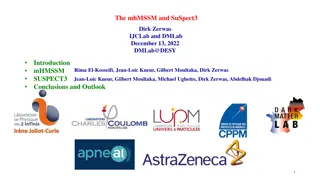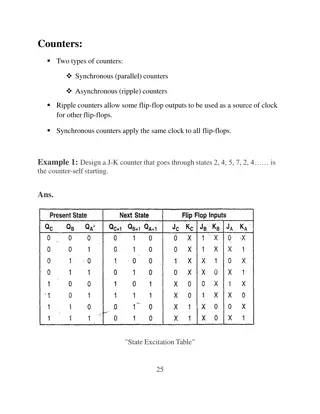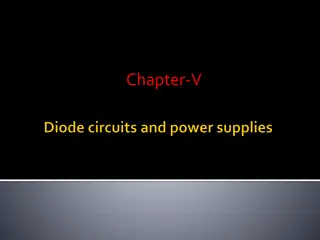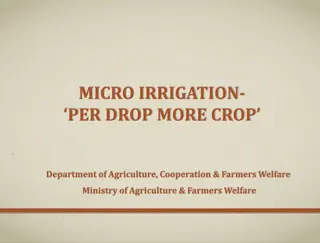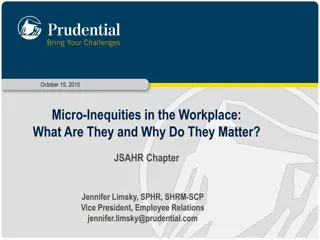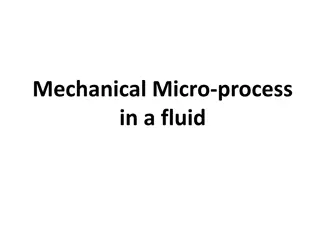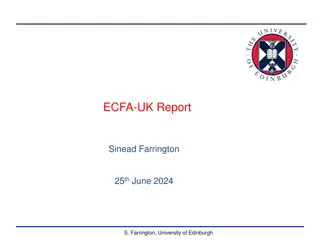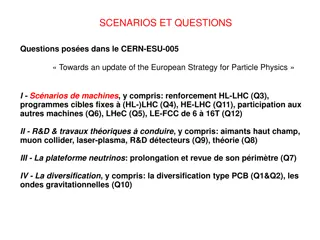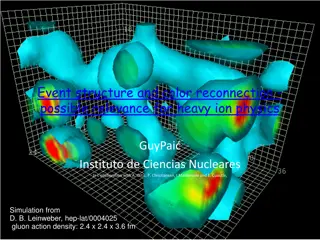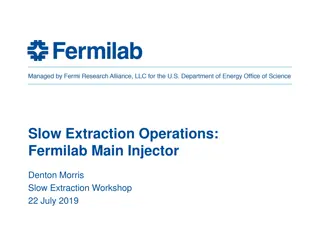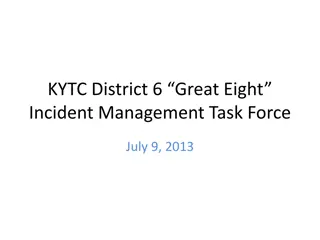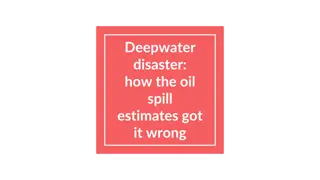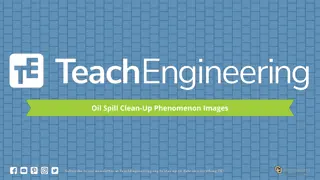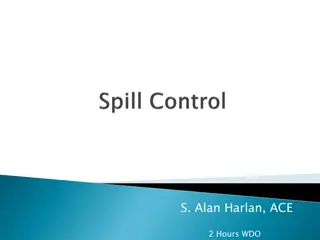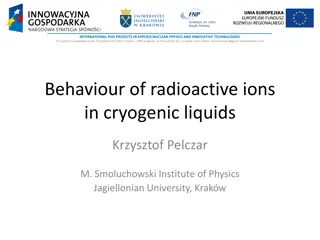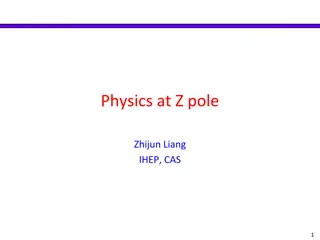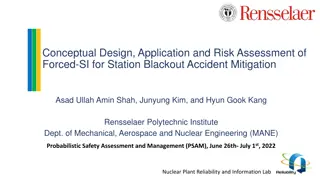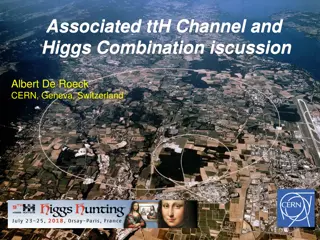Ripple Mitigation Strategies for Spill Micro-Structure in Particle Physics
This document discusses strategies for mitigating ripples in spill micro-structures in particle accelerators, focusing on a quad-driven slow extraction mechanism. It outlines potential solutions and improvements in micro-structure, along with results and recommendations from beam time experiments. The content delves into the challenges of ripple mitigation and offers insights into optimizing the extraction process for enhanced performance.
- Ripple Mitigation
- Particle Physics
- Quad-Driven Extraction
- Beam Time Experiments
- Spill Micro-Structure
Download Presentation

Please find below an Image/Link to download the presentation.
The content on the website is provided AS IS for your information and personal use only. It may not be sold, licensed, or shared on other websites without obtaining consent from the author. Download presentation by click this link. If you encounter any issues during the download, it is possible that the publisher has removed the file from their server.
E N D
Presentation Transcript
Ripple mitigation of spill micro-structure Rahul Singh, Peter Forck, Stefan Sorge, GSI with contributions by: Andrzej Stafiniak, Horst Welker, GSI Machine meeting, February 19th, 2019 Quad driven slow extraction mechanism and the ripple problem Potential solution(s); and the rough idea behind them Improvements of micro-structure; results of beam time in Feb. 19 ; Recommendations R. Singh et al., February 19th, 2019 Ripple mitigation L. Groening, Sept. 15th, 2003 GSI-Palaver, Dec. 10th, 2003, A dedicated proton accelerator for p-physics at the future GSI facilities
2.00 0.800 Slow Extraction by Tune Ramp (Quad driven) norm. optischer Wert [mrad] S06MU1A S11MU2 Feld B[T] Horizontal phase space at ele.-stat. septum x shrinkage of separatrix by tune ramp Qspill (t) 4 + 1/3 ele.-stat. septum Quad. tune ramp Zeit [ms] Qh < Qres for low current separatrix 0. 0. 0. 2954. 0. Zeit [ms] 2954. 0.03 0.0300 9.00 thickness tune Q norm. optischer Wert [mrad] Qend x extr. channel S02KQ1E S07KS1C Delta-Q Qres = ?. ? Qspill action of quadrupole power supplier ripple: unintended tune variation Qstart 0.00 0. 0. 3 0 0. Zeit [ms] 2954. 0. Zeit [ms] 2954. time [s] 4.3333 -373.50 transit time Ttransit Sextupoles: Create non-linear fields Sext. strength S: Ion s amplitude growth per turn Sext. phase sext: Orientation of triangle norm. optischer Wert [mrad] last spiral step xstep after 3 turns S01QS1F Q-horizontal Ttransit & xstep Qh(t) Default value: S = 0.06 m-2 typical variation: S = 0.05...0.1 m-2 Abbreviation: S k k2L -374.50 4.3000 In addition: Ions tune spread by chromaticity ? ?= ? ? 0. Zeit [ms] 2954. 0. Zeit [ms] 2954. ? S01 S01 S01 S01 S01 S01 R. Singh et al., February 19th, 2019 2 Ripple mitigation L. Groening, Sept. 15th, 2003 GSI-Palaver, Dec. 10th, 2003, A dedicated proton accelerator for p-physics at the future GSI facilities
Slow Extraction by Tune Ramp (Quad driven) A Counts A B Time Convolution Transit time (Ttransit) spread Counts At small sextupole strength, tune ramp starts closer to resonance Sextupole strength and distance to resonance is thus the same parameter Transit time magnitude and spread are inversely proportional to distance to resonance Time B Counts R. Singh et al., February 19th, 2019 3 Ripple mitigation L. Groening, Sept. 15th, 2003 GSI-Palaver, Dec. 10th, 2003, A dedicated proton accelerator for p-physics at the future GSI facilities
Slow Extraction by Tune Ramp (Quad driven) A Counts A B Time Convolution Transit time spread Counts At small sextupole strength, tune ramp starts closer to resonance Sextupole strength and distance to resonance is thus the same parameter Transit time magnitude and spread are inversely proportional to distance to resonance B Counts Time R. Singh et al., February 19th, 2019 4 Ripple mitigation L. Groening, Sept. 15th, 2003 GSI-Palaver, Dec. 10th, 2003, A dedicated proton accelerator for p-physics at the future GSI facilities
Results of Tracking Simulations: Transit Time Spread Transit time spread: Transit time: Dependence on sextupole strength S & distance to resonance QH (t) i.e. Ttransit = Ttransit (S, QH(t)) Histogram of transit time Ttransit Small S A low S = 0.03 m-2 extr. beam high S = 0.1 m-2 stable beam p Q(t) low S = 0.03 m-2 Large S A high S = 0.1 m-2 extr. beam Result: Ttransitvaries during extraction Lower S flattop is reach earlier Lower S larger mean Ttransit Lower S larger spread of Ttransit FFT with low fcut stable beam p Q(t) R. Singh et al., February 19th, 2019 Ripple mitigation 5 L. Groening, Sept. 15th, 2003 GSI-Palaver, Dec. 10th, 2003, A dedicated proton accelerator for p-physics at the future GSI facilities
Sextupole Strength Variation: Experiments Experiment: Ar18+, 300 MeV/u Experiment: Fourier transformation Bin size = 10 ms Bin size = 18 Hz Results: Sextupole strength S has effect on duty factor F Duty factor F is time dependent For lower S the best value is reached earlier Spectrum: 50 Hz related narrow lines due to PS switching, strongest line at 600 Hz For lower S high frequencies are damped due to spread in Ttransit i.e. low pass filtering Further lowering sextupole leads to beam losses, since the spiral step xstep becomes too small R. Singh et al., February 19th, 2019 6 Ripple mitigation L. Groening, Sept. 15th, 2003 GSI-Palaver, Dec. 10th, 2003, A dedicated proton accelerator for p-physics at the future GSI facilities
Minimize transverse beam size at extraction Small S Small S Large S A A A extr. beam extr. beam extr. beam stable beam stable beam stable beam p p p Q(t) Q(t) Q(t) Reduce the transverse beam size : Start further closer to resonance Chopper Window: Can be done using the chopper window at the expense of reduced intensities! Beam cooling: Cool the beam at injection with electron cooler: Lose time! Experimental results R. Singh et al., February 19th, 2019 7 Ripple mitigation L. Groening, Sept. 15th, 2003 GSI-Palaver, Dec. 10th, 2003, A dedicated proton accelerator for p-physics at the future GSI facilities
Introduce ripples on quadrupoles A Counts Introduced ripple A B Time Convolution Transit time spread Counts Add a ripple with a higher frequency and higher amplitude This high frequency separatrix modulation does not allow lower inherent power supply ripple and noise to feed on particles Frequency high enough such that it is smoothed out by transit time spread but not too high B Counts Time R. Singh et al., February 19th, 2019 8 Ripple mitigation L. Groening, Sept. 15th, 2003 GSI-Palaver, Dec. 10th, 2003, A dedicated proton accelerator for p-physics at the future GSI facilities
Results of ripple excitation and conclusion Noise reduction Introduced excitation 100% modulated 200% modulated Be close to resonance: Always use as low sextupole strength as possible and always start tune ramp close to resonance. Small beam size: For experiments requiring lower intensities, reduce intensity at chopper window at not from UNILAC. Excitation method not yet optimized, since the transit time spread evolves (increases from low to high) during the quad driven extraction, apply a frequency sweep (high to low) The sweep should be triggered at extraction start: though no effects were seen R. Singh et al., February 19th, 2019 9 Ripple mitigation L. Groening, Sept. 15th, 2003 GSI-Palaver, Dec. 10th, 2003, A dedicated proton accelerator for p-physics at the future GSI facilities
